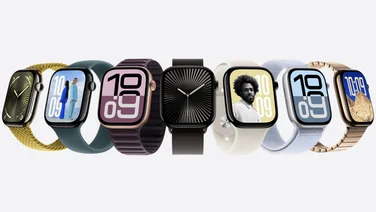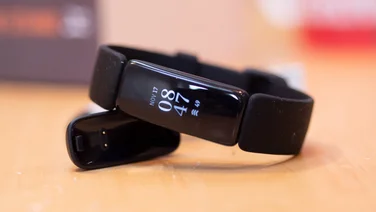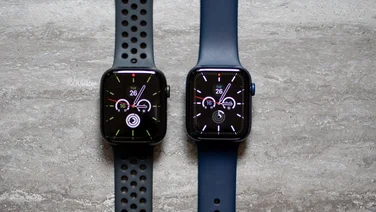To help us provide you with free impartial advice, we may earn a commission if you buy through links on our site. Learn more
- How to choose the best pulse oximeter for you
- The best consumer pulse oximeters you can buy in 2023
- 1. Kinetik Wellbeing Finger Pulse Oximeter: Best budget pulse oximeter
- 2. Salter Finger Tip Pulse Oximeter: Best oximeter from a known brand
- The best fitness trackers with pulse oximeters to buy
- 1. Honor Band 5: Best budget fitness tracker with a pulse oximeter
- 2. Vivosmart 4: The cheapest Garmin with an SpO2 sensor

Pulse oximeters have received a lot of press in years due to their relationship to Covid-19. These simple devices are available on the high street for relatively low prices and are also included in many fitness wearables, and allow you to measure the oxygen levels in your blood in a non-invasive manner. These devices made the headlines throughout the pandemic, as a quick and easy test such as this was postulated as being helpful in the early detection and monitoring of Covid-19, however there is a lack of consensus on the devices’ efficacy and best usage practices. For the most reliable guidance on at-home oximetry in relation to COVID-19, keep up to date with the latest NHS advice.
In the meantime, to learn what pulse oximeters do, what their shortcomings are, and how to interpret the data they record, read on. After this, you will find a selection of pulse oximeters that you can buy today.
How to choose the best pulse oximeter for you
What is a pulse oximeter?
A pulse oximeter – sometimes referred to as an SpO2 sensor – is a sensor that uses light to measure your pulse and “sats”, or how saturated with oxygen your blood is. Once the preserve of medical settings, they are increasingly found in fitness trackers and even smartphones, letting you check your sats quickly and easily, wherever you might be.
Blood oxygen saturation is given as a percentage, with readings above 95% considered to be normal and healthy. Low blood sats can be associated with a number of medical conditions including anaemia, sleep apnoea, COPD and pneumonia.
How reliable are they?
Calibrated pulse oximeters offer a cheap, non-invasive method of assessing a patient’s blood oxygen saturation but come with a number of caveats. To name a few pitfalls, cold fingers, low blood pressure and ambient light can all result in inaccurate readings.
Because they’re susceptible to giving unreliable results, it’s best to look out for trends in your blood sats rather than fixating on individual readings, Michael S. Lipnick, M.D., assistant professor of anaesthesia and critical care at the University of California, San Francisco tells ConsumerReports.org. In other words, if you notice unusually low readings compared to your baseline, then it’s worth taking note.
However, other experts warn the US consumer site that it’s always best to interpret results with a certain amount of caution. Indeed, they say a pulse oximeter could even give a false sense of security if you’re struggling to breathe but the device gives a normal reading.
When readings from medically approved devices need to be taken with a pinch of salt, it goes without saying that the same is true of those in fitness wearables and smartphones, which won’t typically have such certification. Fitness wearables, for instance, offer unreliable readings because they’re worn on the wrist, where they’re free to move around and won’t necessarily be assessing the same blood supply as you’d find on a fingertip.
Garmin recommends that, to get the best readings, you should make sure the device is snug on your wrist and that you keep it still at the same height as your heart. Irrespective of whether you manage this, though, both Fitbit and Garmin’s mobile apps have prominent disclaimers that they’re not intended for medical use, instead recommending you see your doctor if you have any concerns about your SpO2 readings.
For smartphones, the evidence is even more damning. Indeed, a study from April 2020 concludes that “it is not physically possible to measure SpO2 using current smartphone technology.”
Is there any benefit to using a consumer pulse oximeter if I suspect I might have coronavirus?
Anyone using a pulse oximeter should consult their doctor first. If you have a consumer pulse oximeter or a fitness wearable that measures blood oxygen sats, there’s no harm in asking whether they believe there’s merit in using the data from the device. Beyond that, following the latest NHS guidance and rules regarding Covid-19 is always wise.
The best consumer pulse oximeters you can buy in 2023
1. Kinetik Wellbeing Finger Pulse Oximeter: Best budget pulse oximeter

Price when reviewed: £30 | Check price at Amazon
A certified class IIa medical device used by NHS Scotland, this pulse oximeter has received overwhelmingly positive reviews from happy customers, with 87% of buyers giving it a four or five-star rating on Amazon. Worn on the finger, it promises readings in a matter of seconds and its lanyard means you can always keep it nearby.
2. Salter Finger Tip Pulse Oximeter: Best oximeter from a known brand

Price when reviewed: £20 | Check price at Amazon
Salter is a household name when it comes to kitchen scales as well as health products such as blood pressure monitors, so it’s no surprise that it has its own oximeter. And according to customer reviews, it’s a trustworthy product, too – with relatively accurate readings and a straightforward user interface.
Like the other non-wearables on our list, the Salter oximeter works by putting it on your fingertip for a few seconds. The device will record your oxygen saturation, pulse rate, perfusion index and pulse bar while displaying a live graph onscreen.
The best fitness trackers with pulse oximeters to buy
N.B. Although some of Fitbit’s wearables have SpO2 sensors – including the Charge 3, Charge 4, Ionic, Versa, Versa Lite and Versa 2 – it’s not currently possible to use any of them on the fly. Instead, they take measurements while you sleep, and measure SpO2 variability instead of giving you a percentage rating. For this reason, we’ve not included any of these in the following list, instead opting for devices that give you instant readings.
1. Honor Band 5: Best budget fitness tracker with a pulse oximeter

Price when reviewed: £33 | Check price at Amazon
At just £33, the Honor Band 5 is only £13 more than the budget pulse oximeter listed above, yet it also doubles up as an activity tracker, keeping tabs on your steps, sleep and heart rate throughout the day. To check your SpO2, swipe to the appropriate screen, tap it and the tracker will start measuring your blood oxygen levels.
Read our full review of the Honor Band 5 here
2. Vivosmart 4: The cheapest Garmin with an SpO2 sensor

Price when reviewed: £60 | Check price at Amazon
Garmin’s Vivosmart 4 is the cheapest Garmin wearable that lets you track your blood oxygen saturation levels – and it’s a pretty great fitness tracker, too. To check your SpO2 levels, tap the menu button, swipe to the icon with a heart and tap it. After this, tap the Pulse Ox symbol and the tracker asks you to keep still while it takes a reading.










